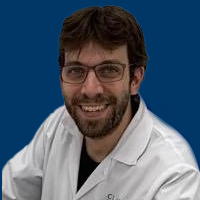Overview of SCLC and Importance of Early Diagnosis
Drs Owonikoko and Weiss provide a brief overview of small cell lung cancer and the vital importance of an early diagnosis to improve patient outcomes.
EP: 1.Overview of SCLC and Importance of Early Diagnosis
EP: 2.Use of the TNM Staging System in SCLC
EP: 3.Progress in the Treatment and Management of SCLC
EP: 4.Patient Profile 1: A 68-Year-Old Male with SCLC and Brain Metastases
EP: 5.Frontline Therapy for SCLC: The CASPIAN Trial of Durvalumab + Chemotherapy
EP: 6.Management of Adverse Events Associated with Durvalumab + Chemotherapy
EP: 7.IMpower 133 Trial and Patient Selection for Durvalumab + Chemotherapy vs Atezolizumab + Chemotherapy
EP: 8.Ongoing Trials and Real-World Studies in Frontline SCLC
EP: 9.Patient Profile 2: A 60-Year-Old Man with SCLC Progressing on First-Line Therapy
EP: 10.Second Line Treatment Options in SCLC and Selecting the Appropriate Therapy
EP: 11.Lurbinectedin for SCLC Treatment in the Second-Line Setting
EP: 12.Patient Profile 3: A 70-Year-Old Man with SCLC Receiving Chemotherapy in the Second-Line Setting
EP: 13.Choosing the Appropriate Treatment in the Second Line Setting in SCLC
EP: 14.Investigational Agents in SCLC in the Second Line Setting and Beyond
EP: 15.Clinical Practice Pearls and the Future of SCLC
Charu Aggarwal, MD, MPH: Hello, and welcome to this OncLive® Peer Exchange titled "The Evolving Treatment Landscape of Small Cell Lung Cancer." I'm Charu Aggarwal. I'm a medical oncologist at the University of Pennsylvania's Perelman School of Medicine and the Abramson Cancer Center, [Philadelphia, Pennsylvania]. I'm joined today by a panel of experts in the field of small cell lung cancer, and I would like to welcome them, and they will take an opportunity to introduce themselves. Dr Taofeek Owonikoko.
Taofeek Owonikoko, MD, PhD: Hello. I'm pleased to be part of this panel. I'm a professor of medicine at University of Pittsburgh UPMC Hillman Cancer Center in Pittsburgh, Pennsylvania.
Charu Aggarwal, MD, MPH: Welcome, Taofeek. Dr Charles Rudin?
Charles Rudin, MD, PhD: Hi. I'm Charlie Rudin. I'm the Chief of Thoracic Oncology at Memorial Sloan Kettering Cancer Center in New York.
Charu Aggarwal, MD, MPH: Welcome, Charlie. Dr Vivek Subbiah.
Vivek Subbiah, MD: Hi, I'm Vivek Subbiah from the University of Texas MD Anderson Cancer Center. I'm a medical oncologist and an associate professor in Houston, Texas. Thank you.
Charu Aggarwal, MD, MPH: Welcome, Vivek and Dr. Jared Weiss.
Jared Weiss, MD: I'm Jared Weiss. I'm a professor of medicine at UNC's Linebarger Comprehensive Cancer Center and Section Chief of thoracic and head and neck oncology.
Charu Aggarwal, MD, MPH: Welcome everyone and thank you for joining me today. Let's get started on our first topic today. We are going to talk about small cell lung cancer, recent excitements, lot of data being presented. I wanted to just open with incidents of small cell lung cancer. We know that incidents of small cell lung cancer has been declining. It's about 13% or 15% of all newly diagnosed patients with lung cancer. And most of these unfortunately present with extensive stage disease. Most often with brain metastases, and most often patients present an extremist. We sometimes have to initiate therapy in the inpatient setting necessitating us to come in with chemotherapy, maybe not a combination chemotherapy immunotherapy approaches. Dr Weiss, can you describe to us how patients usually present to you? Can you talk about are there specific signs and symptoms and how do you work up a patient with a diagnosis of small cell lung cancer?
Jared Weiss, MD: The first thing to say is that small cell lung cancer is almost exclusively a disease of patients with a heavy smoking history. And they come to the disease with the comorbidities associated with smoking, as well as the socio-economic disadvantages and the stigmatization that come with that. Physically, the presentation is very often in the central chest. A lot of central chest presentation, central lymph node presentation. This can clip off the central vessels in the chest. This can clip off central airways. And as a consequence, small cell presentation is often dramatic. It's often a highly symptomatic patient. The solid tumor we see most often in the emergency room. As you referenced, often patients are admitted. Fortunately, the disease is very chemotherapy sensitive, and we can help these people pretty rapidly with administration of that first cycle. Small cell also likes to metastasize. It's very aggressively metastatic disease, as you mentioned very brain trophic, which can cause a lot of suffering. For our workup, it's important to get cross-sectional imaging, at least down to the adrenal glands in the US, [United States] we're usually covering the entirety of the abdomen. And often we're getting a pet scan which de facto gets a wider area and very, very important to have an MRI of the brain with contrast. At that point, like any other solid tumor, you want a biopsy the most advanced appearing site, and if you have a potentially limited stage patient, that's usually endobronchial ultrasound guided biopsy of a lymph node. And in the case of an extensive stage, the most easily accessed remote site. Under the microscope, it's usually not a terribly hard diagnosis. It's a small round blue cell tumor, although you do sometimes see an extraordinary amount of immunohistochemistry done to confirm what should be somewhat straightforward.
Charu Aggarwal, MD, MPH: Taofeek, I was wondering if you could talk to us about the importance of establishing the diagnosis early, starting treatment how do you go about doing that and tell us what we should all be doing?
Taofeek Owonikoko, MD, PhD: It is important for this disease that we - thank you for that question - It's important for this disease that we find the patient early and that we initiate treatment as soon as possible for two main reasons. One is majority of our patient when we find them after they've presented with symptoms, it's usually then at the incurable extensive stage of the disease. And the second is a disease that's associated with a lot of symptoms. When you allow to go too far, it may get to the point where you are not even able to offer the patient some of the effective treatment options that we have. Having said that we currently do not have any reliable way to detect this disease in patient before they present with symptoms. If you all remember the data from the National Lung Screening Trial, which was looking for any type of lung cancer, it's disappointing that that trial also was able to catch patient with small cell lung cancer, but majority of them was already at the advanced stage setting. And therefore, there was no survival impact for that small cohort of patient with small cell. Having said that when we have a patient with a lot of symptoms, we want to make sure that we establish diagnosis. And I think that's a double-edged sword that has gotten us to a situation where we are comfortable dealing with small amount of tissue sample to establish the diagnosis without actually going through the whole process of trying to define exactly what is going on with the patient, because we want to initiate treatment as soon as possible. The other thing that is somewhat disappointed, which is important for us to detect and start treatment early is, when you look at the US population of patient diagnosed with small cell lung cancer, 40% of them may not get any treatment at all. And that reflects the belief by most of our non-oncology colleague in other specialties like pulmonary and internal medicine, believing that once you have a diagnosis of small cell, that there's no effective treatment, I shouldn't even bother going through any treatment. So that is something that maybe over time with education with our peers and colleagues, we are going to be able to change that paradigm.
Charu Aggarwal, MD, MPH: That's a challenge. And we definitely see that in many of our situations with newly diagnosed patients.
Transcript edited for clarity.



